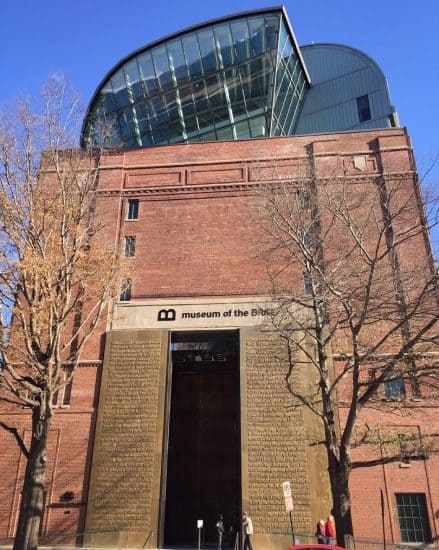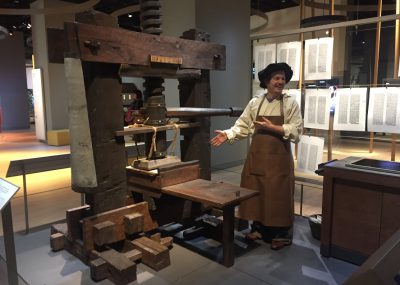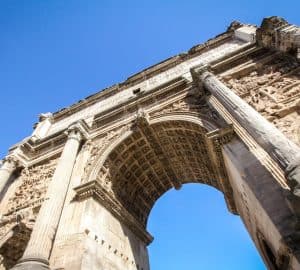
Earlier this year some of the Discerning History team visited the new Museum of the Bible while passing through Washington, DC. Several people have asked for our opinion of the museum, so we’ve put this post together to give our impressions.
During its planning, the Museum of the Bible was attended with much controversy. Secular news agencies and historians were concerned that the founder of the museum was just interested in spreading the gospel while masquerading as real history. There was also complaints that the fragments of the Dead Sea Scrolls on display were fakes. Neither of these were of concern to us. The signs explaining the fragments clearly state the questions of their authenticity, and the museum seems to be generally well researched.
It is a grand modern museum in downtown Washington, DC. As soon as you enter the building it is clear that the museum was built by people who have great respect for the Bible, as the walls are covered with scripture verses. There is no admission charge, though some exhibits do cost money. Our time was limited and we did not make it through all of the free exhibits, much less the paid ones.
Those with strict views of the 2nd commandment (which forbids images of God) will not find much to offend them. There are certainly some representations of Biblical scenes and Bible characters, but it looks like a definite effort was made to avoid them.
Many modern museums have far too many information panels and interactive exhibits and nearly no artifacts. This is a mistake, as the artifacts are the one thing that museums have that it is impossible to experience on your computer from the comfort of your home. The Museum of the Bible mostly avoids this, but with a unique twist. They have a good mix of artifacts, information panels, interactive exhibits, and video clips. But they clearly wanted to tell the entire story of the writing of the Bible. Unfortunately the very earliest artifacts and texts are very rare and are already on display in other museums. So instead they just use replicas of originals in the British Museum and elsewhere. While it is nice to be able to see the scale and shape of the objects first hand, it does leave you with the feeling that if this is what you are coming for, you are in the wrong museum. We would have preferred if they had used more space for artifacts that they did have, instead of filling it with artifacts that they wished they had.
One thing we found surprisingly engaging were the video clips on display. They were produced in partnership with Drive Thru History and do a great job showing you what the historical locations relevant to the artifacts in front of you look like today. There is also a longer video you can watch in their theater that we wished we had the time to see.

After walking through the exhibit on the early scripture texts, and some other special exhibits, we finished our visit with the exhibits on historic Bible translations and on the influence of the Bible on history. These were filled with a lot of interesting artifacts including the personal Bible of Martin Luther. They had a replica Gutenburg printing press, and a gentleman was doing a printing demonstration while we were there. We even got to take a page that he printed home with us.
This section revealed a weakness of the museum. It seems like the museum is intended to be very inoffensive to anyone who respects the Bible. But this can come at the expense of telling the full and most interesting parts of the Bible in history. For example, they had a lot of Bibles that were translated into common languages at the beginning of the Reformation. They also had some Catholic Bible translations from not too long thereafter. However, there was little mention of the fact that many Protestants were killed by the Catholics for translating or even possessing the Bible. The most dramatic moments in Bible translation history were completely ignored. Why? Doubtless to avoid offending the Catholic visitors.
Overall it was a good experience, and we would recommended anyone who is interesting to visit if they have time in Washington, DC. It is encouraging to see a museum that holds the Bible in such respect right downtown in our nation’s capital.
Have any questions about the museum? Have you visited and have some feedback of your own that you would like to share? Please feel free to comment below.





